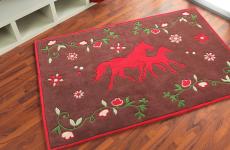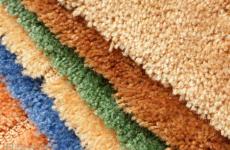Powder high-strength dispersion-reinforced concrete of a new generation. Production of products from high-strength fiber-reinforced concrete Proportions of powder-activated high-strength sandy concrete
POWDER CONCRETE REACTIVE POWDER CONCRETE
Reaction powder concretes (RPB) of the new generation are specific concretes of the future, not
containing coarse-grained and lumpy aggregates. This distinguishes them from
fine-grained (sandy) and crushed stone concrete. Dry reaction-powder concrete mixes
(SRPBS), designed to obtain crushed stone self-compacting concrete for
monolithic and prefabricated construction, can become a new, main type of composite binder
for the production of many types of concrete. High fluidity of reactive powder concrete mixtures
allows you to additionally fill them with crushed stone while maintaining fluidity and use them for
self-compacting high-strength concrete; when filled with sand and gravel - for vibration
technologies of forming, vibrocompression and calendering. In this case, the concretes obtained by
vibration and vibration force compaction technologies, can have higher strength than that of
cast concrete. At a higher degree, concretes for general construction purposes of classes
B20-B40.
Reaction Powder Concrete
REACTIVE POWDER CONCRETEDue to the fact that in powder concrete the volume concentration of cement is 22-25%, the particles
cement, in accordance with the previously proposed formula, do not contact each other, but are separated
water nanosized particles of microsilica, micrometric particles of ground sand and
fine-grained sand. In such conditions, unlike conventional sandy and crushed stone concrete,
the topochemical mechanism of solidification is inferior to that through the solution, ion-diffusion
hardening mechanism. This is confirmed in simple but ingenious control experiments.
hardening of composite systems consisting of small amounts of coarse-ground clinkers and
granulated slags and a significant amount of fine marble at 10-12% water. V
Powdered concrete particles of cement are separated by particles of microsilica and stone flour.
Thanks to the thinnest shells of water on the surfaces of the particles, the hardening of powder
concrete flows very quickly. Their daily strength reaches 40-60 MPa and more.
Dispersed part of reactive powder concrete, consisting of Portland cement, stone flour and
MK, responsible for high gravitational fluidity, has significant water demand
without addition of SP. With a composition with a ratio of C: KM: MK: Pt as 1: 0.5: 0.1: 1.5, the gravitational current
it is realized with a water-solid ratio equal to 0.095-0.11, depending on the type of MC. The greatest
MK has water demand. Its suspension with water begins to spread at a water content of 110 120% to the MC mass. Only in the presence of cement and SP does MC become a realogically active component in an aqueous medium.
binder (SRPV)
ADVANTAGES OF DRY REACTION-POWDERBINDER (SRPV)
1. Extremely high strength RPV, reaching 120-160 MPa., Significantly exceeding
the strength of superplasticized Portland cement due to the transformation of "ballast" lime into
cementitious hydrosilicates.
2. The multifunctionality of the physical and technical properties of concrete with the introduction of short
dispersed steel fibers: low water absorption (less than 1%), high frost resistance (more
1000 cycles), high tensile strength (10-15 MPa) and flexural tensile strength (40-50
MPa), high impact strength, high resistance to carbonate and sulfate corrosion, etc .;
3. High technical and economic indicators of production of SRPB at cement plants,
having a set of equipment: drying, grinding, homogenizing, etc .;
4. The widespread occurrence of quartz sand in many regions of the world, as well as stone
flour from the technology of enrichment of ferrous and non-ferrous metals by methods of magnetic separation and flotation;
ADVANTAGES OF DRY REACTION-POWDER
BINDER (SRPV)
5. Huge reserves of stone crushing screenings during their complex processing into fine-grained
crushed stone and stone flour;
6. Possibilities of using the technology of joint grinding of the reaction filler, cement and
superplasticizer;
7. Possibilities of using SRPB for the manufacture of high-strength, extra-high-strength
new generation crushed stone and sandy concretes, as well as concretes for general construction purposes
by varying the ratio of aggregate and binder;
8. Possibilities of obtaining high-strength lightweight concrete on non-absorbent microglass and
microspheres with the implementation of high strength reaction-powder binder;
9. Possibilities of manufacturing high-strength adhesives and bonds for repair work.
(PWS)
Application of dry reaction powder binder (SRPV)
APPLICATION OF DRY REACTIVE-POWDER BINDER(PWS)
Dry reaction-powder concrete mixtures (SRPBS), intended for the production of rubble-free
self-compacting concretes for monolithic and prefabricated construction, can become a new, basic
a type of composite binder for the production of many types of concrete. High fluidity
reaction-powder concrete mixtures allows you to additionally fill them with crushed stone while maintaining
fluidity and use them for self-compacting high-strength concrete; when filled with sand and
crushed stone - for vibration molding technologies, vibrocompression and calendering. Wherein
concretes obtained by vibration and vibration-force compaction technologies can have more
higher strength than cast concrete. At a higher degree, concretes are obtained
for general construction purposes of classes B20-B40.
Compressive strength, MPa
Compound
Reaction powder
concrete with 0.9% Melflux 2641 F
W / T
0,1
V / C
Consistency
Blurring of the cone
0,31
Higermann
290 mm
Raft
Vodopogl
message
ness
by mass,
,
%
kg / m3
2260
0,96
after
steaming
under normal
conditions
hardening
across
1 day
across
28 days
across
1 day
across
28 days
119
149
49,2
132
Effective use of reactive powder concrete
EFFECTIVE USE OF REACTIVE POWDERCONCRETE MIX
When filling the reaction-powder concrete mixture with sand and high-strength crushed stone, one obtains
concretes with a strength of 120-130 MPa with cement consumption in terms of heavy concrete equal to 300-350
kg / m Promising
the possibility of using SRPBS for the production of aerated concrete and aerated concrete. They use
Portland cement, the strength of which is lower than that of RPB, and the structural self-strengthening processes in
the latter's time pass more fully.
An increase in the operational reliability of products and structures made of such concretes is achieved
dispersed reinforcement with thin short steel fibers, glass and basalt fiber.
This allows to increase the axial tensile strength by 4-5 times, bending tensile strength
6-8 times, impact strength 15-20 times compared to concretes of 400-500 grades.
01.06.2008 16:51:57
The article describes the properties and capabilities of high-strength powder concretes, as well as the areas and technologies of their application.
The high pace of construction of residential and industrial buildings with new and unique architectural forms and especially special specially loaded structures (such as large-span bridges, skyscrapers, offshore oil platforms, tanks for storing gases and liquids under pressure, etc.) required the development of new efficient concrete. Significant progress in this has been especially noted since the end of the 1980s. Modern high-quality concretes (VKB) classically combine a wide range of concretes for various purposes: high-strength and ultra-high-strength concretes [see. Bornemann R., Fenling E. Ultrahochfester Beton-Entwicklung und Verhalten. // Leipziger Massivbauseminar, 2000, Bd. 10; Schmidt M. Bornemann R. M? Glichkeiten und Crensen von Hochfestem Beton. // Proc. 14, Jbausil, 2000, Bd. 1], self-compacting concrete, highly corrosion-resistant concrete. These types of concretes meet high requirements for compressive and tensile strength, crack resistance, impact strength, wear resistance, corrosion resistance, and frost resistance.
Undoubtedly, the transition to new types of concrete was facilitated, firstly, by revolutionary advances in the plasticization of concrete and mortar mixtures, and secondly, by the emergence of the most active pozzolanic additives - microsilica, dehydrated kaolins and highly dispersed ashes. Combinations of superplasticizers and especially environmentally friendly hyperplasticizers on a polycarboxylate, polyacrylate and polyglycolium base make it possible to obtain superfluid cement-mineral dispersed systems and concrete mixtures. Thanks to these achievements, the number of components in concrete with chemical additives reached 6–8, the water-cement ratio decreased to 0.24–0.28 while maintaining plasticity, characterized by a cone settlement of 4–10 cm. In self-compacting concretes (Selbstverdichtender Beton-SVB) with stone flour (CM) or without it, but with the addition of MK in highly efficient concretes (Ultrahochfester Beton, Ultra hochleistung Beton) on hyperplasticizers, unlike cast on traditional joint ventures, perfect fluidity of concrete mixtures is combined with low sedimentation and self-compaction with spontaneous air removal.
"High" rheology with significant dewatering in superplasticized concrete mixtures is provided by a fluid rheological matrix, which has different scale levels of structural elements that make it up. In crushed stone concrete for crushed stone, a cement-sand mortar serves as a rheological matrix at various micro-mesoscale levels. In plasticized concrete mixtures for high-strength concretes for crushed stone as a macrostructural element, the rheological matrix, the proportion of which should be significantly higher than in ordinary concretes, is a more complex dispersion consisting of sand, cement, stone flour, microsilica and water. In turn, for sand in conventional concrete mixtures, the rheological matrix at the micro level is a cement-water paste, the proportion of which can be increased to ensure fluidity by increasing the amount of cement. But this, on the one hand, is uneconomical (especially for concretes of classes B10 - B30), on the other hand, paradoxically, superplasticizers are bad water-reducing additives for Portland cement, although they were all created and created for it. Almost all superplasticizers, as we have shown since 1979, “work” much better on many mineral powders or on their mixture with cement [see. Kalashnikov V.I. Fundamentals of plasticization of mineral dispersed systems for the production of building materials: Dissertation in the form of a scientific report for the degree of doct. tech. sciences. - Voronezh, 1996] than with pure cement. Cement is a water-unstable, hydrating system that forms colloidal particles immediately upon contact with water and thickens quickly. Colloidal particles in water are difficult to disperse with superplasticizers. An example is clay suspensions that are poorly super-liquefied.
Thus, the conclusion suggests itself: stone flour must be added to the cement, and it will increase not only the rheological effect of the joint venture on the mixture, but also the fraction of the rheological matrix itself. As a result, it becomes possible to significantly reduce the amount of water, increase the density and increase the strength of concrete. The addition of stone flour will practically be equivalent to an increase in cement (if the water-reducing effects are significantly higher than when cement is added).
It is important to focus here not on replacing part of the cement with stone flour, but on adding it (with a significant share - 40-60%) to Portland cement. Based on the polystructural theory in 1985–2000. All work on changing the polystructure was aimed at replacing Portland cement by 30-50% with mineral fillers to save it in concrete [see. Solomatov V. I., Vyrovoy V. N. et al. Composite building materials and structures with reduced material consumption. - Kiev: Budivelnik, 1991; Aganin S.P. degree of Cand. tech. sciences. - M, 1996; Fadel I. M. Intensive separate technology of concrete filled with basalt: Abstract dis. Cand. tech. sciences - M, 1993]. The strategy of saving Portland cement in concretes of the same strength will give way to the strategy of saving concrete with 2–3 times higher strength not only in compression, but also in flexural and axial tension and impact. Saving concrete in more openwork structures will give a higher economic effect than saving cement.
Considering the compositions of rheological matrices at various scale levels, we establish that for sand in high-strength concrete the rheological matrix at the micro level is a complex mixture of cement, flour, silica, superplasticizer and water. In turn, for high-strength concretes with microsilica for a mixture of cement and stone flour (equal dispersion) as structural elements, another rheological matrix appears with a smaller scale level - a mixture of microsilica, water and superplasticizer.
For crushed concrete, these scales of the structural elements of rheological matrices correspond to the scales of the optimal granulometry of dry concrete components to obtain a high density thereof.
Thus, the addition of stone flour performs both a structural-rheological function and a matrix-filling function. For high-strength concretes, the reaction-chemical function of stone flour is no less important, which is performed with a higher effect by reactive microsilica and microdehydrated kaolin.
The maximum rheological and water-reducing effects due to the adsorption of SP on the solid phase surface are genetically characteristic of fine-dispersed systems with a high interface.
Table 1.
Rheological and water-reducing action of SP in water-mineral systems
Dispersed powder type and plasticizer | SP dosage,% | ||
CaCO3 (Mg 150) | |||
ВаСО3 (Melment) | |||
Ca (OH) 2 (LST) | |||
Cement PO "Volskcement" (С-3) | |||
Opoka of the Penza field (С-3) | |||
Ground glass TF10 (S-3) |
Table 1 shows that in Portland cement cast suspensions with SP, the water-reducing effect of the latter is 1.5–7.0 times (sic!) Higher than in mineral powders. For rocks, this excess can reach 2–3 times.
Thus, the combination of hyperplasticizers with microsilica, stone flour or ash made it possible to raise the level of compressive strength to 130–150, and in some cases - to 180–200 MPa and more. However, a significant increase in strength leads to an intense increase in fragility and a decrease in Poisson's ratio to 0.14–0.17, which leads to the risk of sudden destruction of structures in case of emergency. Getting rid of this negative property of concrete is carried out not only by reinforcing the latter with bar reinforcement, but by a combination of bar reinforcement with the introduction of fibers from polymers, glass and steel.
The fundamentals of plasticization and water reduction of mineral and cement dispersed systems were formulated in the doctoral dissertation of V.I. Kalashnikov. [cm. Kalashnikov V.I. Fundamentals of plasticization of mineral dispersed systems for the production of building materials: Dissertation in the form of a scientific report for the degree of doct. tech. sciences. - Voronezh, 1996] in 1996 on the basis of previously completed work in the period from 1979 to 1996. [Kalashnikov V. I., Ivanov I. A. About the structural and rheological state of extremely liquefied highly concentrated dispersed systems. // Proceedings of the IV National Conference on Mechanics and Technology of Composite Materials. - Sofia: BAN, 1985; Ivanov I. A., Kalashnikov V. I. Efficiency of plasticization of dispersed mineral compositions depending on the concentration of the solid phase in them. // Rheology of concrete mixtures and its technological problems. Abstracts. report of the III All-Union Symposium. - Riga. - RPI, 1979; Kalashnikov V.I., Ivanov I.A.On the nature of plasticization of mineral dispersed compositions depending on the concentration of the solid phase in them.// Mechanics and technology of composite materials. Materials of the II National Conference. - Sofia: BAN, 1979; Kalashnikov V.I.On the reaction of various mineral compositions to naphthalene-sulfonic acid superplasticizers and the effect of rapidly dissolving alkalis on it. // Mechanics and technology of composite materials. Materials of the III National Conference with the participation of foreign representatives. - Sofia: BAN, 1982; Kalashnikov V.I. Accounting for rheological changes in concrete mixtures with superplasticizers. // Materials of the IX All-Union Conference on Concrete and Reinforced Concrete (Tashkent, 1983). - Penza. - 1983; Kalashnikov V.I., Ivanov I.A.Features of rheological changes in cement compositions under the influence of ion-stabilizing plasticizers. // Proceedings "Technological mechanics of concrete". - Riga: RPI, 1984]. These are the prospects for the targeted use of the highest possible water-reducing activity of LB in finely dispersed systems, the features of quantitative rheological and structural-mechanical changes in superplasticized systems, which consist in their avalanche transition from solid-phase to fluid states with supermal addition of water. These are the developed criteria for gravitational spreading and post-thixotropic resource of the flow of highly dispersed plasticized systems (under their own weight) and spontaneous leveling of the day surface. This is the proposed concept of the limiting concentration of cement systems by finely dispersed powders from rocks of sedimentary, magmatic and metamorphic origin, which are selective in terms of the levels of high water reduction to the SP. The most important results obtained in these works consist in the possibility of a 5–15-fold reduction in water consumption in dispersions while maintaining gravitational spreading. It has been shown that by combining rheologically active powders with cement, it is possible to enhance the SP effect and obtain high-density castings. It is these principles that are implemented in reaction-powder concretes with an increase in their density and strength (Reaktionspulver beton - RPB or Reactive Powder Concrete - RPC [see Dolgopolov N. N., Sukhanov M. A., Efimov S. N. New type of cement: structure of cement stone. // Building materials. - 1994. - No. 115]). Another result is an increase in the reducing effect of SP with an increase in the dispersion of powders [see. Kalashnikov V.I. Fundamentals of plasticization of mineral dispersed systems for the production of building materials: Dissertation in the form of a scientific report for the degree of doct. tech. sciences. - Voronezh, 1996]. It is also used in powdered fine concrete by increasing the proportion of fine constituents by adding silica fume to the cement. New in the theory and practice of powder concretes was the use of fine sand with a fraction of 0.1–0.5 mm, which made the concrete fine-grained, in contrast to the usual sandy one on sand with a fraction of 0–5 mm. Our calculation of the average specific surface area of the dispersed part of powder concrete (composition: cement - 700 kg; fine sand fr. 0.125-0.63 mm - 950 kg, basalt flour Ssp = 380 m2 / kg - 350 kg, microsilica Svd = 3200 m2 / kg - 140 kg) with its content of 49% of the total mixture with fine-grained sand of fraction 0.125-0.5 mm shows that with the dispersion of MC Smc = 3000 m2 / kg the average surface of the powder part is Svd = 1060 m2 / kg, and with Smc = 2000 m2 / kg - Svd = 785 m2 / kg. It is on such finely dispersed components that fine-grained reaction-powder concretes are made, in which the volume concentration of the solid phase without sand reaches 58–64%, and together with sand - 76–77% and is slightly inferior to the concentration of the solid phase in superplasticized heavy concretes (Cv = 0, 80–0.85). However, in crushed concrete the volume concentration of the solid phase minus crushed stone and sand is much lower, which determines the high density of the dispersed matrix.
High strength is ensured by the presence of not only silica fume or dehydrated kaolin, but also a reactive powder from ground rock. According to literature data, mainly fly ash, balt, limestone or quartz flour is introduced. Ample opportunities in the production of reactive powder concretes opened up in the USSR and Russia in connection with the development and research of composite binders of low water demand by Yu.M. Bazhenov, Sh. T. Babaev, A. Komarom. A., Batrakov V. G., Dolgopolov N. N. It was proved that replacing cement in the process of grinding VNV with carbonate, granite, quartz flour up to 50% significantly increases the water-reducing effect. The W / T-ratio, which ensures the gravitational spreading of crushed stone concretes, in comparison with the usual introduction of the joint venture, is reduced to 13–15%, the strength of concrete on such VNV-50 reaches 90–100 MPa. Essentially, modern powder concrete can be obtained on the basis of VNV, microsilica, fine sand and dispersed reinforcement.
Dispersed-reinforced powder concretes are very effective not only for load-bearing structures with combined reinforcement with prestressed reinforcement, but also for the production of very thin-walled, including spatial architectural details.
According to the latest data, textile reinforcement of structures is possible. It was the development of textile-fiber production (fabric) of bulk frames made of high-strength polymer and alkali-resistant yarns in developed foreign countries that motivated the development more than 10 years ago in France and Canada of reaction-powder concretes with joint ventures without large aggregates with especially fine quartz filler, filled with stone powders. and microsilica. Concrete mixes from such fine-grained mixes spread out under their own weight, filling the completely dense mesh structure of the woven frame and all filigree form junctions.
The "high" rheology of powder concrete mixtures (PBS) provides, at a water content of 10–12% of the mass of dry components, the yield stress? 0 = 5–15 Pa, ie. only 5-10 times higher than in oil paints. With this ε0, it can be determined using the mini-rheometric method developed by us in 1995. Low yield stress is ensured by the optimal thickness of the rheological matrix interlayer. From consideration of the topological structure of the PBL, the average thickness of the interlayer X is determined by the formula:
where is the average diameter of the sand particles; - volumetric concentration.
For the composition below, at W / T = 0.103, the thickness of the interlayer will be 0.056 mm. De Larrard and Sedran found that for finer sands (d = 0.125–0.4 mm) the thickness varies from 48 to 88 µm.
An increase in the interlayer of particles decreases the viscosity and ultimate shear stress and increases the fluidity. The fluidity can be increased by adding water and introducing SP. In general, the effect of water and SP on the change in viscosity, ultimate shear stress and yield is ambiguous (Fig. 1).
The superplasticizer lowers the viscosity to a much lesser extent than the addition of water, while the decrease in the yield strength due to DP is significantly higher than that under the influence of water.

Rice. 1. Influence of SP and water on viscosity, yield point and fluidity
The main properties of superplasticized ultimately filled systems are that the viscosity can be high enough and the system can flow slowly if the yield stress is low. For conventional systems without SP, the viscosity may be low, but the increased yield stress prevents them from spreading, since they do not have a post-thixotropic flow resource [see. Kalashnikov V.I., Ivanov I.A.Features of rheological changes in cement compositions under the influence of ion-stabilizing plasticizers. // Proceedings "Technological mechanics of concrete". - Riga: RPI, 1984].
Rheological properties depend on the type and dosage of the SP. The influence of three types of SP is shown in Fig. 2. The most efficient JV is Woerment 794.

Rice. 2 Influence of the type and dosage of the joint venture on? About: 1 - Woerment 794; 2 - C-3; 3 - Melment F 10
At the same time, it was not the domestic JV S-3 that turned out to be less selective, but the foreign JV on the melamine basis Melment F10.
The spreadability of powder concrete mixtures is extremely important in the formation of concrete products with woven volumetric mesh frames laid in the form.
Such volumetric openwork-fabric frameworks in the form of a tee, I-beam, channel and other configurations allow for quick reinforcement, which consists in installing and fixing the framework in a mold, followed by pouring suspension concrete, easily penetrating through the cells of the framework 2–5 mm in size (Fig. 3) ... Fabric frames can radically increase the crack resistance of concrete when exposed to alternating temperature fluctuations and significantly reduce deformations.
The concrete mix should not only easily spill locally through the mesh frame, but also spread when filling the mold with "reverse" penetration through the frame with an increase in the volume of the mixture in the mold. To assess the fluidity, powder mixtures of the same composition in terms of the content of dry components were used, and the spreadability from the cone (for the shaking table) was controlled by the amount of SP and (partially) water. Spreading was blocked with a mesh ring 175 mm in diameter.
Rice. 3 Sample fabric frame

Rice. 4 Mixture spreads with free and blocked spreading
The mesh had a clear size of 2.8 × 2.8 mm with a wire diameter of 0.3 × 0.3 mm (Fig. 4). Control mixtures were made with spreads of 25.0; 26.5; 28.2 and 29.8 cm. As a result of the experiments, it was found that with an increase in the fluidity of the mixture, the ratio of the diameters of the free dc and the blocked spread d decreases. In fig. 5 shows the change in dc / dbotdc.

Rice. 5 Change in dc / db from the value of free spreading dc
As follows from the figure, the difference in the spreads of the mixture dc and db disappears at a fluidity characterized by a free spread of 29.8 cm.When dc = 28.2, the spread through the mesh decreases by 5%. A mixture with a spread of 25 cm experiences especially great braking when spreading through the mesh.
In this regard, when using mesh frames with a cell of 3 × 3 mm, it is necessary to use mixtures with a spread of at least 28–30 cm.
The physical and technical properties of dispersed-reinforced powder concrete, reinforced with 1% by volume of steel fibers with a diameter of 0.15 mm and a length of 6 mm are presented in table 2
Table 2.
Physical and technical properties of powdered concrete on a binder of low water demand using the domestic joint venture S-3
Name of properties | unit of measurement | Indicators |
|
Density | |||
Porosity | |||
Compressive strength | |||
Flexural tensile strength | |||
Axial tensile strength | |||
Elastic modulus | |||
Poisson's ratio | |||
Water absorption | |||
Frost resistance | number of cycles |
As evidenced by foreign data, with 3% reinforcement, the compressive strength reaches 180-200 MPa, with axial tension - 8-10 MPa. Impact strength increases more than tenfold.
The possibilities of powder concrete are far from being exhausted, given the effectiveness of hydrothermal treatment and its effect on the increase in the proportion of tobermorite, and, accordingly, xonotlite.
- Was the information helpful? yes, partly no
- 15444
Scientists never cease to amaze with the development of revolutionary technologies. A mixture with improved properties was obtained not so long ago - in the early 90s of the 20th century. In Russia, its use in the construction of buildings is not so common, the main application is the manufacture of self-leveling floors and decorative items: tabletops, openwork arches and partitions.
To determine the advantages of a better quality RPB material, consider the parameters:
- Compound.
- Properties.
- Scope of use.
- Business case for benefits.
Compound
Concrete is a building material formed from a compacted mixture of various compositions:
1. The basis is an astringent, “gluing” the filler substance. The ability to reliably integrate components into a single whole meets the main requirements of the application. Binder types:
- Cement.
- Gypsum.
- Lime.
- Polymers.
- Bitumen.
2. Filler - a component that determines density, weight, strength. Grain types and sizes:
- Sand - up to 5 mm.
- Expanded clay - up to 40.
- Slag - up to 15.
- Crushed stone - up to 40.
3. Additives - modifiers that improve the properties, change the setting processes of the resulting mixture. Kinds:
- Plasticizing.
- Reinforcing.
- Perishable.
- Regulating frost resistance and / or setting speed.

4. Water is a component that reacts with the binder (not used in bituminous concrete). The percentage ratio of liquid to the mass of the base determines the plasticity and setting time, frost resistance and strength of the product.
The use of various combinations of bases, aggregates, additives, their ratios, proportions makes it possible to obtain concretes with various characteristics.
The difference between RPB and other types of materials is the fine aggregate fraction. Reducing the percentage of cement, replacing it with stone flour, microsilica made it possible to create mixtures with high fluidity, self-compacting compositions.
Heavy-duty RPB is obtained by mixing water (7-11%) and reactive powder. Proportions (%):
- Portland cement grade M500 gray or white - 30 ~ 34.
- Microquartz or stone flour - 12-17%.
- Silica fume - 3.2 ~ 6.8.
- Fine-grained quartz sand (fraction 0.1 ~ 0.63 mm).
- Polycarboxylate ether superplasticizer 0.2 ~ 0.5.
- Strength gain accelerator - 0.2.

Production technology:
- The components are prepared according to the percentage.
- The mixer is fed with water and a plasticizer. The mixing process begins.
- Add cement, stone flour, microsilica.
- To add color, the addition of dyes (iron oxide) is allowed.
- Stir for 3 minutes.
- Supplemented with sand and (for reinforced concrete).
- Mixing process 2-3 minutes. In this period of time, the setting accelerator is introduced in a percentage ratio of 0.2 of the total weight.
- The surface of the mold is moistened with water.
- Pour the mixture.
- Spray water on the surface of the solution distributed in the mold.
- Cover the casting container.
All operations will take up to 15 minutes.

Properties of reactive powder concrete
Positive traits:
1. The use of microsilica and stone flour led to a decrease in the proportion of cement and expensive superplasticizers in the RPM, which led to a drop in cost.
2. The composition of self-compacting powdered super-strong concrete with a high degree of fluidity was obtained:
- It is not necessary to use a vibrating table.
- The front surface of the resulting products practically does not require mechanical rework
- Possibility of manufacturing elements with different textures and surface roughness.
3. Reinforcement with steel, cellulose fiber, the use of openwork fabric frames increases the grade up to M2000, compressive strength - up to 200 MPa.
4. High resistance to carbonate and sulfate corrosion.
5. The use of a powder reaction mixture helps to create ultra-strong (˃40-50 MPa), lightweight structures (density 1400 ~ 1650 kg / m3). The reduction in mass reduces the load on the foundation of the structures. The strength allows the construction of the load-bearing elements of the building frame of a smaller thickness - the consumption is reduced.

Specifications
Engineers at the design stage carry out calculations and draw up a number of recommendations and requirements for building materials and parameters. Basic indicators:
- Concrete grade - the number after the letter "M" (M100) in the marking, indicates the range of static compressive load (kg / cm2), after exceeding which destruction occurs.
- Strength: in compression - the value of the pressure of the press on the sample before its deformation, fixed experimentally, unit of measure: MPa. Bending is the pressure of the press on the center of the sample, installed on two supports.
- Density - weight of a product with a volume of 1 cubic meter, unit of measure: kg / m3.
- Frost resistance - the number of freezing and reverse process cycles with sample destruction less than 5%.
- Shrinkage ratio - percentage reduction in volume, linear dimensions of the structure when ready.
- Water absorption is the ratio of the mass or volume of water absorbed by the sample when immersed in a vessel with liquid. It characterizes the open porosity of concrete.

Scope of application
A new technology based on a reaction-powder mixture allows creating concretes with improved characteristics and a wide range of applications:
- 1. Self-leveling floors with high abrasion resistance with a minimum applied layer thickness.
- 2. Manufacturing of a curb stone with a long service life.
- 3. Various additives in the required proportion can significantly reduce the process of water absorption, which makes it possible to use the material in the construction of offshore oil platforms.
- 4. In civil and industrial construction.
- 5. Construction of bridges and tunnels.
- 6. For worktops with high strength, surface structure and roughness.
- 7. Decorative panels.
- 8. Creation of partitions, art products from transparent concrete. With gradual pouring, light-sensitive fibers are placed in the mold.
- 9. Manufacturing of architectural thin-walled parts using fabric reinforcement.
- 10. Use for durable adhesives and repair mixes.
- 11. Thermal insulation mortar using glass spheres.
- 12. High-strength concrete on crushed granite.
- 13. Bas-reliefs, monuments.
- 14. Colored concrete.
Price
The high price misleads developers about the appropriateness of use. Reducing transport costs, increasing the service life of structures and self-leveling floors, and other positive properties of the material pay off financial investments. Finding and buying RPM is quite difficult. The problem stems from reduced demand.
Prices at which you can buy RPB in Russia:
Unfortunately, it is difficult to give examples of civil or industrial facilities erected on the territory of Russia using RPB. The main use of powdered concrete was in the manufacture of artificial stone, countertops, as well as self-leveling floors and repair compounds.
| Articles |






